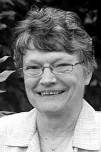Distant Dome is co-published by InDepthNH.org and Manchester Ink Link.
By GARRY RAYNO, Distant Dome
CONCORD — A legislative study committee on education funding wants to change the formula to help property-poor school districts.
However, the committee also wants to distribute state aid based on a district’s enrollment which means many of the property poorest school districts would see little if any increases in their state aid.

Garry Rayno
The Committee to Study Education Funding and the Cost of an Opportunity for an Adequate Education proposes a new grant program to provide $2,500 per student for the state’s 26 property poorest school districts, and additional help for 88 other school districts on a sliding scale between $2,478 and $1,000 per student.
The remaining 124 school districts would not receive additional state aid under the proposal which will be introduced as a bill into the upcoming legislative session.
The proposal would require the state to spend just over $1 billion in state money including the $363 million raised by the State Education Property Tax.
Currently, the state spends about $900 million in state aid to public schools including the statewide property tax.
The new aid program would cost approximately $187 million compared to an estimated $138 million for stabilization grants in fiscal year 2019.
Under the proposal, stabilization grants would be eliminated. The grants were established as part of the last major overhaul of the education funding formula in 2011 and guaranteed school districts they would receive at least the same state education aid they received the year before. Since that time student enrollment population decreased statewide although some school districts like Dover, Windham and Bedford have increased.
Two years ago the legislature voted to reduce stabilization grants by 4 percent a year until the program is eliminated.

Rep. Karen Umberger
The chair of the study committee, Rep. Karen Umberger, R-Kearsarge, said the program should provide about the same amount of state aid for the poorest communities.
“It focuses on actual student populations,” said Umberger. “We’re focusing on poor districts and trying to get them additional aid for the students they actually have.”
The proposal would also increase per student aid for children on free or reduced lunches — an indicator of poverty — from $1,818 per student to $2,500 while maintaining the $1,956 grant per special education student and $711 for each English as a second language student, and eliminate the $711 grant for third-grade reading proficiency.
The proposal would also increase the base adequacy grant from the current $3,636 per student to $3,987. Every school district in the state receives the base adequacy grant for each student, but not all school districts receive the other grants for poverty, special education and English language learning students.
The new grant program is based on a community’s property value per student.
For example, the communities with the least property value per student are Berlin at $331,221, followed by Northumberland at $363,259 and Claremont at $430,117.
At the other end of the spectrum with the most property values per student are Millsfield with $47.2 million, Hart’s Location with $42.2 million and Newington with $18.1 million.
The state average for property value per student is a little more than $1 million per student.
The higher the property value, the lower the property tax rate and the easier it is to raise tax money for public education.
The education portion of property tax rates ranges from $23.75 in Brookline to 34 cents in New Castle with a state average of $12.73.
The Claremont II decision said the state’s education funding system was unconstitutional because it was largely funded with local property taxes with widely varying rates while the Constitution calls for taxes to be proportional and reasonable.
In its final report dated Nov. 1, the committee notes the difficulty some communities have paying for public education while others are able to provide more educational opportunities for their students with much lower tax rates.
“The variance in tax rates does not necessarily correlate to the differences in the quality of education, but rather on the value of property in each town and the ability of homeowners and businesses to support a higher tax rate. Even though the average income in new Hampshire is one of the highest in the nation, this is not uniform throughout the state,” according to the report. “This inequity in income affects the ability of some communities to increase the dollars raised by local property taxes. And some communities have instituted a tax cap, and as a result, the school tax rate can only increase by the amount of the tax cap.”
The report notes the difficulty small rural schools have providing a quality education to their students, and adds that consolidation is often not possible because of the distances students would have to travel.
The committee compares the rural districts to the urban schools which, due to their size, are more efficient.
“Each school district in the state has its own operational and cultural issues that may work for one town but not necessarily another,” according to the report. “This unique, but perhaps inefficient operational philosophy, points to New Hampshire’s basic and grounded belief in ‘local control,’ that often collides with statutory law that emphasizes that education is a ‘shared responsibility’ between local and state government.”
The committee gives three basic reasons for increases in education costs: special education, students in poverty and the proliferation of supervisory administrative units.
The school funding formula has changed several times since it was established in 2000 to address the Supreme Court’s two Claremont education decisions.
The committee says it did not attempt to make wholesale changes, but make adjustments to help property poor communities and to align aid with actual student enrollment which has been declining for the past decade.
The committee also recommends state law be changed to allow each school district to determine its own transportation policy and do away with state requirements.
And members suggested that an oversight committee track the formula to determine if other changes are needed.

Rep. Mel Myler
One committee member disagreed with the final report. Rep. Mel Myler, D-Hopkinton, and he suggests more work be done to better address the disparities between school districts and students’ educational opportunities.
“During our review, it become obvious that the educational disparity that was identified by the Claremont I lawsuit was still prevalent 20 plus years later. The legislature has failed in its constitutional responsibility to provide an adequate education to NH students and a uniform tax rate to assist in the funding of public education,” he writes in his minority report. “We continue to have rich schools and poor schools based on the property wealth of their communities. The result is that some students have a greater educational advantage because of the wealth of the community in which they reside.”
Currently the state pays less than a third of the average $15,310 cost per pupil.
With Democrats taking control of the House and Senate next session, changes in the education funding system are likely, but not clear.
Many of the school districts in crisis want lawmakers to stop the reductions in the stabilization grants, while others would like to see a wholesale change in the education funding formula that would have the state provide a greater share of education costs.
Unless there are significant changes in the state’s tax system, that is not likely to happen.
Garry Rayno may be reached at garry.rayno@yahoo.com
Distant Dome by veteran journalist Garry Rayno explores a broader perspective on the State House and state happenings. Over his three-decade career, Rayno covered the NH State House for the New Hampshire Union Leader and Foster’s Daily Democrat. During his career, his coverage spanned the news spectrum, from local planning, school and select boards, to national issues such as electric industry deregulation and Presidential primaries. Rayno lives with his wife Carolyn in New London.

